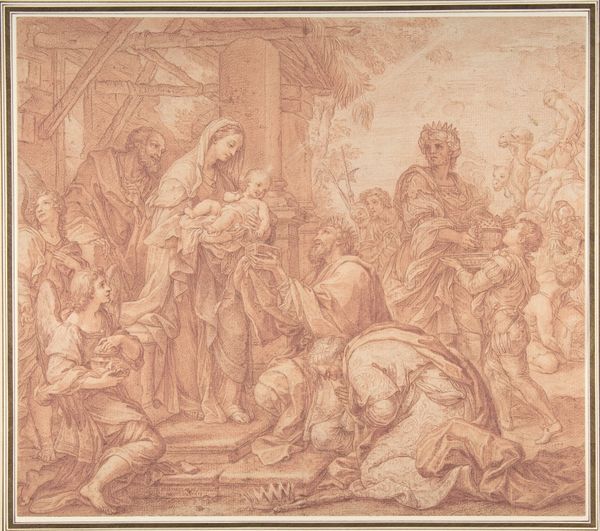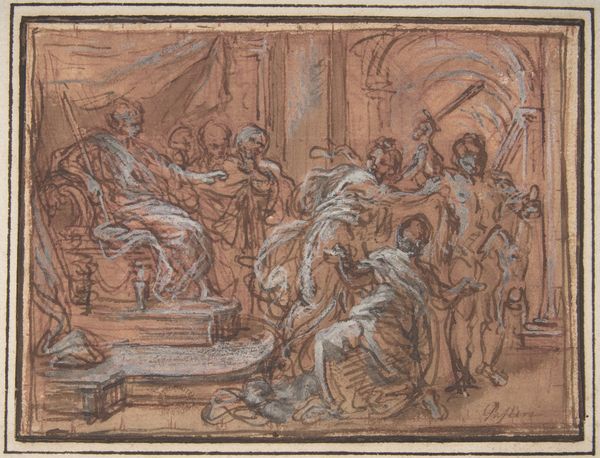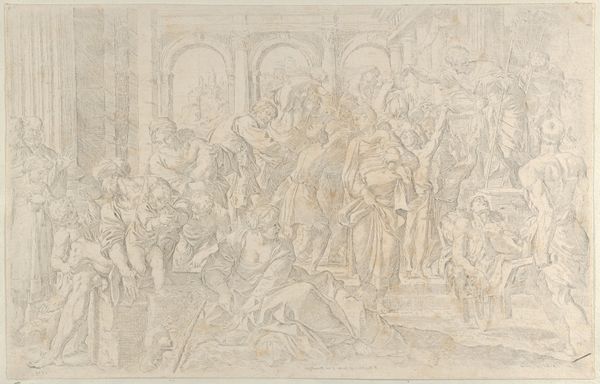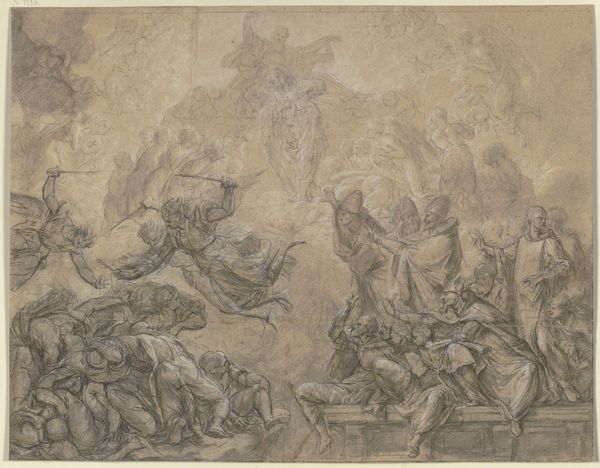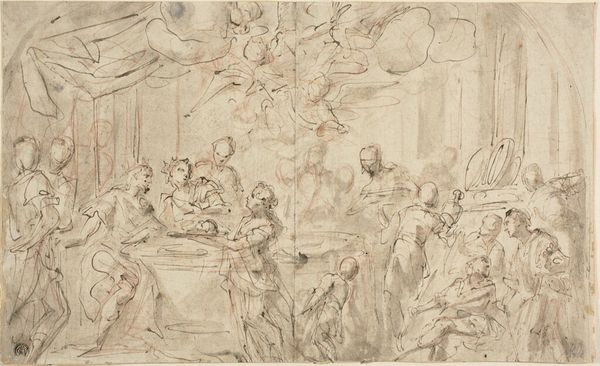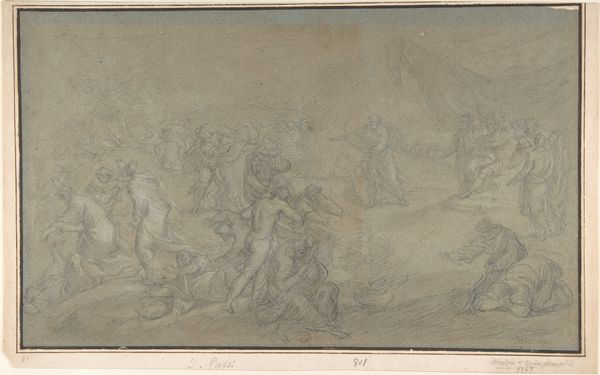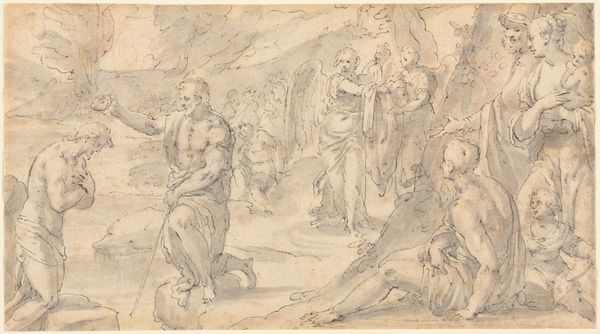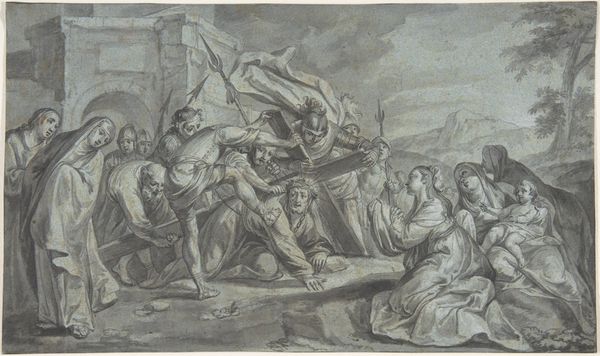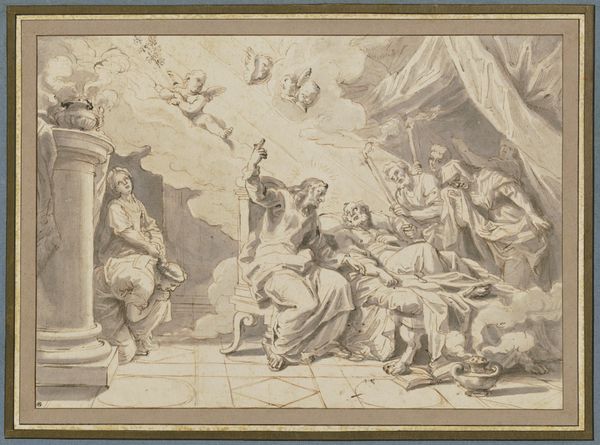
drawing, print, paper, ink
#
drawing
#
narrative-art
#
ink painting
# print
#
figuration
#
paper
#
ink
#
history-painting
#
italian-renaissance
#
watercolor
#
angel
Dimensions: 9 1/8 x 11 1/4 in. (23.1 x 28.6 cm)
Copyright: Public Domain
Editor: Here we have a 17th-century drawing called "The Son of Moses Circumcised," housed at the Metropolitan Museum of Art. It’s an ink drawing on paper, depicting a very intimate scene, though it feels slightly chaotic, maybe even violent. What do you see in this piece? Curator: It’s a powerful work when viewed through the lens of ritual and power. The act of circumcision itself carries deep religious and cultural weight. This piece doesn't shy away from the tension inherent in tradition, law, and identity. Consider the role of women in this moment. Do you notice anything about their presence or their expressions? Editor: They seem very active. One appears to be holding the child firmly while another kneels in what looks like supplication, or maybe grief? It's not how I would expect women to be portrayed in a historical depiction. Curator: Precisely. By centering women within the scene, even if in roles dictated by patriarchal structures, the artist opens up conversations around female agency, and even resistance. What do you make of the hovering angel figure in the background? Editor: It’s a figure of authority, of course, looming over the scene. Its presence definitely heightens the drama, but I wonder about the need for divine intervention in such a personal ritual. Curator: Perhaps the angel functions as a reminder of the covenant, the binding agreement between God and his people, which necessitates acts such as this. Do you think the piece reinforces or questions traditional power dynamics? Editor: It's definitely more complex than I initially thought. The vulnerability of the child set against this backdrop of religious and social expectations sparks discomfort. I’m struck by the interplay between faith, family, and societal demands, especially in light of ongoing dialogues surrounding bodily autonomy and cultural heritage. Curator: And that’s exactly why engaging with works like this remains relevant. It provides a space for questioning how the weight of history and tradition shapes the individual experience even today.
Comments
No comments
Be the first to comment and join the conversation on the ultimate creative platform.
